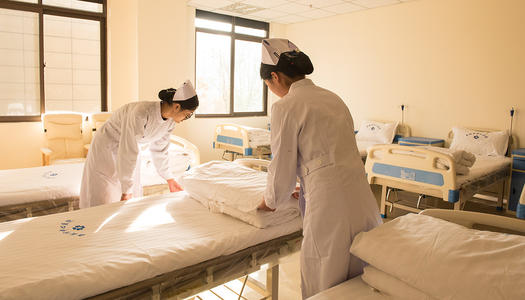Nursing Advocacy
Student’s Name
Institutional Affiliation
Advocacy paper
Nursing Advocacy代写 In this section the bioethical decision-making model will be discussed regarding the Mr. Leary situation.
Case Study Nursing Advocacy代写
Mr. Leary is 76-year-old and had his first stroke three months ago.
It was severe, but he was making progress when he suffered a second stroke. After this, he was quite depressed and aphasic with left-side paralysis. Three weeks ago he suffered a third stroke. While it worsened his physical condition, this third stroke seemed to improve Mr. Leary’s mood. He became cooperative and careful, even attempting to assist with his shaving each morning. Although he has no swallow reflex, he has a Keofeed tube in place to administer nutrition and hydration. His physician wrote that his prognosis for survival was probably less than a year due to the probability of continued cerebral events, but he might live as much as three to five years.
Mrs. Leary is overwhelmed. Nursing Advocacy代写
The social worker has located two nursing homes but she refused each, one was too far from her home which is 75 minutes-drive, and one was too not friendly, the social worker concurred. In the three months of hospitalization since Mr. Leary’s first stroke, he has occasionally had a no code order. However, when his condition stabilizes he is changed to a partial code. Although the discussion was not recorded in the chart, these changes apparently follow the discussion between the physician and Mrs. Leary. The nurses overheard conversations between the doctor and Mr. Leary’s wife regarding the appropriateness of aggressive care.Nursing Advocacy代写**范文
On Thursday
A representative from the hospital business office approached Mrs. Leary to inform her that on Monday Mr. Leary would be decertified by Medicare and that she would be responsible for hospital charges as of that date. On Friday Mrs. Leary called the physician and asked that the Keofeed be withdrawn, something both Mrs. Leary and physician had discussed on other occasions but which Mrs. Leary had previously refused. The physician phoned the unit and left a verbal order to remove the Keofeed tube from Mr. Leary, discontinue feeding, and not to attempt resuscitation. The nursing staff was very upset and called the physician back to discuss the order. He stated that “this is congruent with the patient’s stated values before the first stroke. The patient asked me not to overdo it.” The Keofeed tube was removed from Mr. Leary on Friday afternoon, although the nurses remained very distressed.Nursing Advocacy代写**范文
On Sunday morning Nursing Advocacy代写
The patient reached for a glass of water while leaning by the bedside for mouth care apparently from thirst and aspirated. By Monday pneumonia was evident. Over the weekend arrangements have been made to transfer the patient to home to be cared for by his wife. Mrs. Leary was nearly hysterical. She had not been participating actively in her husband’s care and now realized that she is physically unable to provide total care including turning, positioning, etc. Mr. Leary was discharged to the home Monday afternoon significantly febrile. He died late Monday evening.

Bioethical Decision-Making Model Nursing Advocacy代写
In this section the bioethical decision-making model will be discussed regarding the Mr. Leary situation (Levine-Ariff, J. & Groh, D.H. (1990).
Mr. Leary was suffering from successive strokes which made his left-side dysfunctional. Even though his condition had stabilized, he needed aggressive care. The nursing staff was in a dilemma on whether to remove Keofeed tube as the physician had directed or not because there was no patient consent. Ethically, the nurse was intervening while advocating for the patient who had not given direct consent (“Introduction to Ethics”, 2018). However, the nurse had to oblige to the physician order after he explained what the patient had requested after the first stroke. The nurse decision to remove Keofeed tube and discharge the patient assumed that Mrs. Leary would be able to take care of her husband.Nursing Advocacy代写**范文
Even though Mr. Leary condition was stabilizing, his prolonged illness from persistent strokes had taken toll of him. Nursing Advocacy代写
It was a medical fact that Mr. Leary will not survive without Keofeed tube because he had not swallow reflex. Another medical fact was that he had less than one year to live due to his worsening cerebral problems, so his continued stay at the hospital was an additional cost to Mrs. Leary. The physician’s life expectation of Mr. Leary was based on the ideal assumption that he will receive all the required medical care and attention. Therefore, the nurse responsibility to advocate for the patient was between the two extreme medical facts and assumption.
Conversely, there are non-medical facts associated with this patient-care situation. Nursing Advocacy代写
Firstly, the economic situation was not good for the family. Mr. Leary sickness had depleted the medical insurance cover and the family could not afford his stay in the hospital. His old age had also contributed to his deteriorated health. Mr. Leary believed his illness to be terminal and had chosen to terminate Keofeed tube if the illness persists. There was also social negligence of the wife for failing to actively participate in her husband care. Consequently, she was overwhelmed because he was going to take care of his ailing husband. The implication from the husband’s age, she was old to take care of her husband without outside help. The hospital operations lacked a culture of clear record keeping. It is evident due to the lack of Mr. Leary code order during his treatment.Nursing Advocacy代写**范文
The case has some unclear issues especially when it comes to decision making on Mr. Learly treatment. Nursing Advocacy代写
Mr. Leary was stabilizing according to the description of the situation but the question that arises from the scenario is why they failed to involve him in making decisions that affect his health. It has also not established the grounds for not seeking his direct consent on the decisions being made. In this case, the decision maker being his wife was not sufficiently involved in the treatment of her husband. Therefore, she was not qualified to neither take care nor make a decision on behalf of the ailing husband.Nursing Advocacy代写**范文
The physician and the nurse are bound by bioethics principles in their decision making processes concerning the patient. Nursing Advocacy代写
The professional bioethics include beneficence, nonmaleficence, truth, fidelity, autonomy, and justice (“H.M.E.R.M”, n.d.). In relation to this situation, there was a lack of truth to the patient during the making of decisions which affected him. At the same time, it does not tell us why he was not involved in decision making. The stability of Mr. Leary somehow tells us of his condition, meaning he could have exercised autonomy. On the contrary, he was deprived of the right of self-determination, independence and freedom to make his own choices.Nursing Advocacy代写**范文
At the same time, there is a failure to establish justice at the events of decision making regarding Mr. Leary’s illness. And finally, beneficence and non-maleficence principles were broken when the physician decided to remove the Keofeed tube that Mr. Leary depended for nutrition and hydration. Mr. Leary demise was as a result of the hospital failure.Nursing Advocacy代写**范文
However, Mr. Leary case had an alternative other than removing his Keofeed tube. The physician could not have recommended discharge with Keofeed considering the patient health state. The patient had chances of living for at least one according to the physician observation.

References Nursing Advocacy代写
“Introduction to Ethics.” (2018). David Massey and Indian Hills Community College, pp.1-6.
Hassanpour, M, Hosseini, M. A., Fallahi, M., Abbaszadeh, A. (2011) Evaluation of the Impact of Teaching Nursing Ethics on Nurses’ Decision Making in Social Security Hospitals of Kerman Province in 1389. Journal of Medical Ethics and History of Medicine. ;4(5):58–64.
Health Management, Ethics, and Research Module: 7. Principles of Healthcare Ethics. Retrieved from http://www.open.edu/openlearncreate/mod/oucontent/view.php?id=225&printable=1
Levine-Ariff, J. & Groh, D.H. (1990). Creating an Ethical Environment. Nurse managers’ bookshelf a quarterly series: 2:1. Baltimore, Maryland: Williams & Wilkins. 41-61.
更多其他:Case study代写 Academic代写 Review代写 网课代修 代写CS 商科论文代写 代写案例 Resume代写 Report代写 Proposal代写 Essay代写 研究论文代写 期末论文代写 毕业论文代写 论文代写



您必须登录才能发表评论。